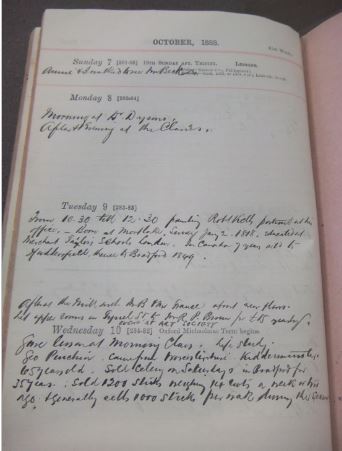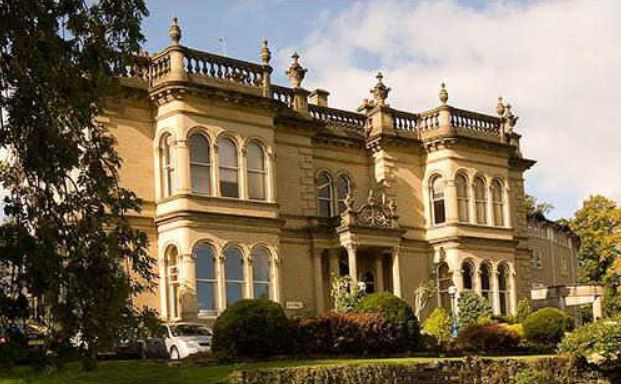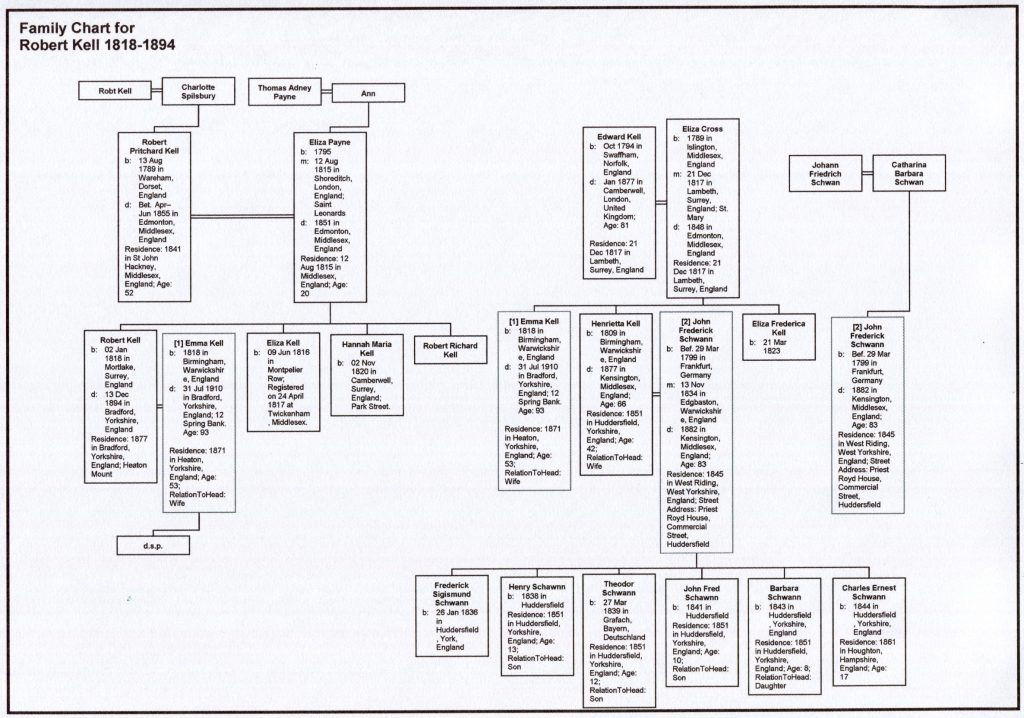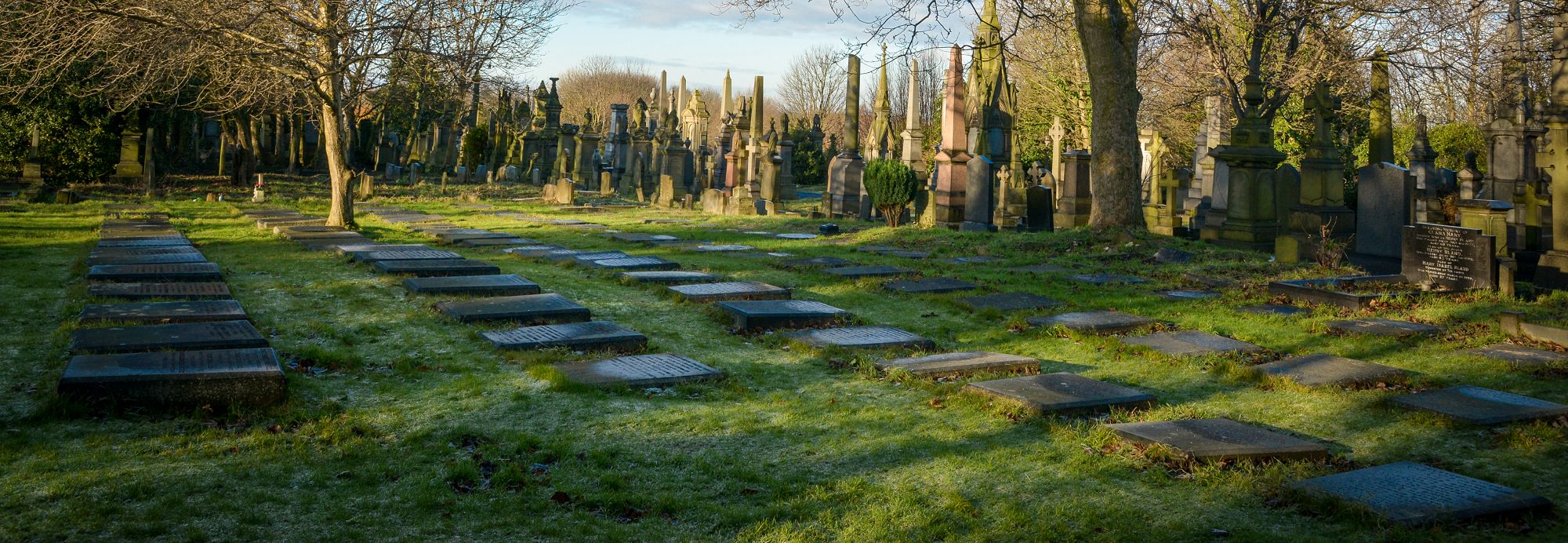Robert Kell
Robert Kell, JP (1818-1894)
Robert was a Stuff & Woollen merchant who resided at 12 Springbank Place, Manningham, Bradford when he died on 13 December 1894 aged 76 years(1). He was buried at Undercliffe Cemetery on the 17 December 1894 and probate was granted on 1 January 1895 at Wakefield with estate value of £481 (just over £56,000 in today’s money). He left no family except his wife.
He was born in Devonshire in 1818 (as Devon was called back then) but his birth was registered in Mortlake, Surrey(2). At an early age he lived in London (his father was in a good position in the Bank of England), so he may have been born in Devon while his parents were visiting friends or relations, but as soon as his mother was able to travel, they returned home being a possible explanation. His birth was also registered at Cripplegate on the 11th March 1818 as being on the 2nd January 1818 at Mortlake, Surrey . He was baptised on 11th February 1819 at Clapham, Surrey(2A), his father being Robert Pritchard Kell and mother Eliza Kell with his maternal parent, Thomas Adney Payne, his godparent. At a young age he went to Canada for several years, returning to England in 1843 where he lived in Huddersfield. He was in a partnership in Schwann & Co. – Mr. Charles Schwann, MP for Manchester, was Robert’s nephew – and they had an office in Bradford which he visited often (weekly even). In 1849 the worsted branch of the firm moved to Bradford. Robert Kell was appointed Manager and later Head of the firm, becoming Kell & Co. with a large warehouse in Vicar Lane. This company was wound up a few years before 1894 due to financial difficulties from the American branch of the firm. Hard times for Robert having to wind up Kell & Co. The house and company warehouse were to be sold off by auction on the 11 July 1889 in 6 Lots: Heaton Mount Estate of 9 acres (classical style architecture Mansion, stables, coach-house, conservatory, gardeners cottage, ornamental lodge and pleasure grounds) plus the 6 storey warehousing at 46 Vicar Lane with its steam engine, boiler & fixtures, plus a Dwelling House at Park Royd, Manningham. There was no bidding on all the Lots which were withdrawn bar the dwelling house which was sold for £2,750. In November 1892 the realisation of the estate was carried out accruing £72,410. (The assets were estimated to realise £91,296). Another blow for Robert which undoubtedly contributed to his demise along with his failing health.
During his career he was a prominent citizen and businessman, local leader of the advanced section of the Liberal Party among whom he was a great power. He was treasurer of the Bradford Liberal Electoral Association for several years. For a time he held a seat on the Aldermen Bench of the Corporation, elected in 1862, being a JP at the Borough Court, Bradford. His interests were in Politics, social and literary subjects and education. All this is significant, leading to the artist John Sowden (1838-1926) wanting to paint a portrait of Robert Kell. This is evidenced in the artist’s diary of October 1888 : –


(This also corroborated some facts regarding Robert Kell mentioned previously.)
10 years after he went to Yorkshire he married his cousin [marriage record not found in England], Emma (born in 1818), the sister of Mrs. Schwann, and daughter of the late Rev. Edward Kell, Unitarian minister of Birmingham.
Just after his death, the Bench expressed their deep regret at the loss of the senior acting magistrate before the Court started business. He was a highly respected and thoroughly & ably discharged his duties. He really had the interests of Bradford at heart.
An article in the Bradford Daily Telegraph of 17 December 1894 related in fine detail the funeral e.g. polished coffin of light oak, Town Hall bell tolled, led by 50 police officers, etc. A later article gave a very sincere account in wonderful prose of Robert as a person. Transcribed herewith:
‘There are men and women, distributed by fickle fortune in all parts of the world, who will receive with genuine sorrow tidings of the death of Mr. Robert Kell. In his palmy days there was no better employer – few, indeed, so good – and no better friend. No man in his employ was ever harshly treated. In many a case the expense of the illness of an (sic.) employe was voluntarily borne by Mr. Kell himself, and he never allowed an ailing servant to return to his duties: he was welcome to stay at home and to receive his wages. In Bradford and elsewhere today there are men living in quiet retirement who accumulated their savings in the service of Mr. Kell. The man whose loss is mourned at this hour thought more of the welfare of others than of himself. But it may be said of him that he writ “his name in love and kindness upon the hearts of others,” and he will never be forgotten.’
So where did he live during all of this? Well, no information has yet been found for his time in Canada, but after that we can follow him through the Census and Electoral Rolls: –
1841 Census: Records that he was 23 (b. 1818) and a Clerk, living in South Street, Huddersfield.
1851 Census: Records that he was 30 and a Stuff Merchant, living at 2 Broad Street, West End, Bradford. He was a lodger and that address is a lodging House. (3)
1861 Census: Not found (out of the country?)
1868 Electoral Roll: 46 Vicar Lane (7)
1869 Electoral Roll: Abode: Spring bank place, Manningham with a Freehold House in Caledonia Street and Freehold House and Land in Keighley Road.(8)
1871 Census: Records that he was 53 and a Stuff & Woollen Merchant, living at Lodge Heaton Mount, Shipley, Bradford with his wife Emma, 53 (b. 1818 in Birmingham) and 3 servants (a cook, parlour maid and house maid). (4)
1875-1889 Electoral Roll: Abode: Heaton Mount, Heaton with a One-tenth Part or Share of Freehold Houses and Stable in Gracechurch Street, Knaresborough and Freehold House and Land in Keighley Road.(8)
1881 Census: Records that he was 63 and a Export Merchant, living at Heaton Mount, Heaton, Bradford with his wife Emma, 63 and 3 servants (a domestic waitress, domestic cook and domestic house maid). (5)

This is a photograph of that residence, built in 1864 for the Kell family:
1891 Census: Records that he was 73 and a Ex Merchant & JP, living at 12 Spring Bank, Manningham, Bradford with his wife Emma, 73, plus a cook domestic servant and housemaid domestic servant. (6)
1890-1892 Electoral Roll: Abode: Heaton Mount, Heaton with a One-tenth Part or Share of Freehold Houses and Stable in Gracechurch Street, Knaresborough.(8)
The Schwann family who ran Schwann & Co. is also of interest, but will not be fully detailed here. In the earlier text it was mentioned that Mr. Charles Schwann, MP for Manchester, was Robert’s nephew and that his wife’s sister was ‘Mrs. Schwann’. Charles was Sir Charles Earnest Swann (he changed the surname from Schwann by Royal licence in 1913) and the 1st Baronet and the 5th son of John Frederick Schwann of Gloucester Square, London (originally from Frankfurt, Germany) and Henrietta Kell of Birmingham. They married on the 13th November 1834 in Edgbaston, Warwickshire. J Frederick Schwann carried on a business in Huddersfield. Charles was a British businessman and Liberal Party politician. He was born 25th January 1844, married Elizabeth Duncan , daughter of David Duncan of Manchester, in 1876 and went on to have 4 sons and 1 daughter, all born in Manchester. In 1890 he and his wife visited India, thenceforward showed a keen interest in Indian questions in Parliament. He retired as MP in 1918 when 78 after representing North Manchester for 32 years; he founded the Manchester ’95 Club, was ‘A Gladstonian’ (friend of Gladstone) and Birkdale Baronet, leaving £164,000 in his will after his death on 13th July 1929 in Birkdale, Lancashire at the ripe age of 85. The family are able to trace their ancestry 300 years in England and over 400 years in Germany.
References:
(1) Death Index reference Volume 9b; Page: 71
(2) Protestant Dissenters’ Birth Registry RG5/Piece 72/ Folio 48 and Non-parochial Birth Registry 1567-1858 RG4/Piece 4663
(2A) Non-parochial Registry 1567-1858 RG4/Piece 1743/ Folio 5
(3) Census HO107/2308; Folio: 719; Page: 17
(4) Census RG 10/4500; Folio: 36; Page: 12
(5) Census RG 11/4475; Folio: 98; Page: 11
(6) Census RG 12/3632; Folio: 64; Page: 33
(7) Ancestry UK Poll Books and Electoral Registers 1538-1893; Bradford Poll Book; Page 80.
(8) Ancestry West Yorkshire Electoral Registers 1840-1962
To aid the understanding of these families relationships, a Family Chart is shown here.

It may be useful just to clarify just what a Stuff & Woollen merchant did…
A Stuff Merchant or Stuff & Woollen Merchant
The cloth merchants of the Bradford/Leeds area of West Riding of Yorkshire in the 17th & 18th Centuries were very important gentlemen – the London merchants could not hold a candle to them! In the 17th C woollen cloth made up over three-quarters of England’s total exports and a fifth came from here. By 1770 Leeds merchants handled two-thirds of the West Riding cloth exports.
The cloth market in the 1720’s was an amazing affair! At 7o/c in the morning the market bell would sound and the merchants would come out of the inns and public houses with their pieces of cloth, take five steps and place them on the trestle tables laid out down both sides of the main street. Within half of a quarter of an hour the market was in operation. At 8:30 the bell would ring again and by 9o/c the street would be open again. £20,000 traded in just over an hour!
Prosperity led to the construction of the Cloth Halls, one of which was the Mixed Cloth Hall in Leeds in the 1760’s.
By the end of the 18th C trade was booming, with exports being developed to such places as the Americas.
There are many types of cloth both wool and cotton and mixes of the two, some with strange names like kerseys, everlastings, amens, barragons, bays, tammies, shalloons, fustians and linsey which is a dress material of coarse, inferior wool woven on a cotton warp.
The highlight of the social calendar in the early 1800’s for the landed gentry was the ball and in protest at the growth of the cotton industry. For examole, in Lancashire, the “stuff ball” was held where ladies had to wear garments of wool or “stuff”. So a stuff merchant was one of these gentlemen whose specialisation was in woollen cloth, trading either in the street markets early in the period or later in the Cloth Halls.
You can find Robert Kell’s monument using the what3words App and website. Follow this link and select satellite view. Click Here. If you are using the App on your phone type in scope.quiz.behave in the search box.
Research by David Broomfield

